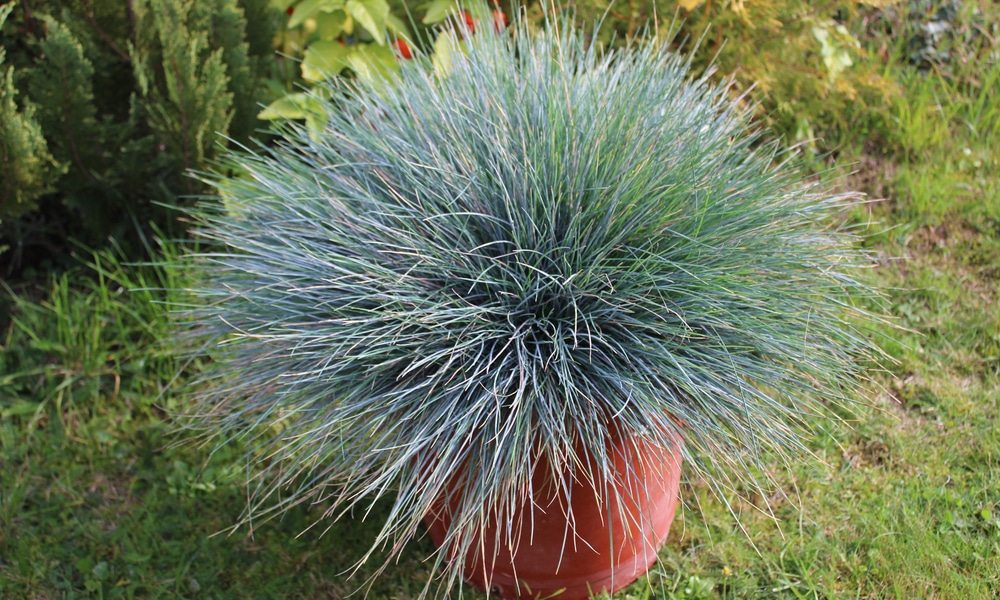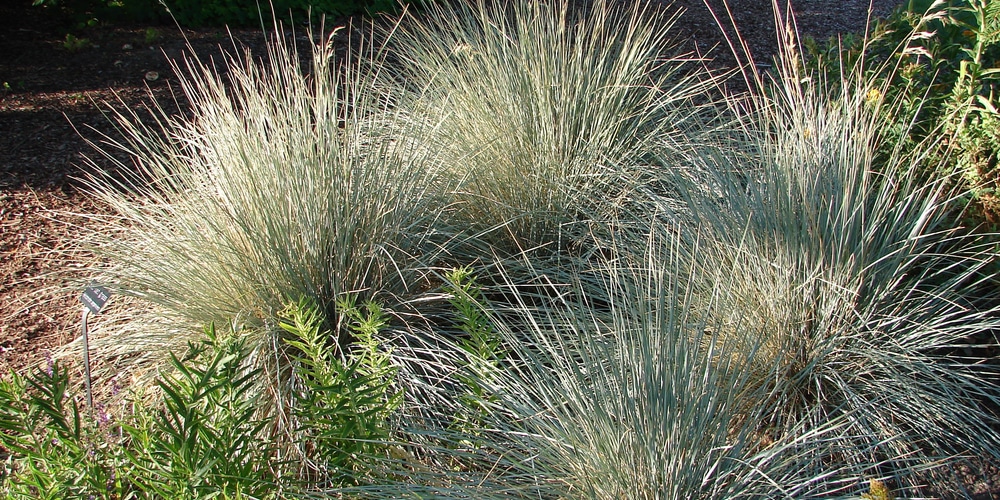When comparing blue oat grass vs blue fescue, these two types of grasses are completely different and are used for different purposes. Blue oat grass plants are ornamental and grow in clumps that reach three feet in height. It’s commonly grown in flower beds, borders, and landscaping projects and produces small light blue or pink flowers in the summer months.
Blue fescue, on the other hand, is a common cool-season lawn grass. It’s a popular choice of lawn cover for homeowners looking for a hardy grass variety that will cope with colder winters. Let’s look at the differences and similarities between blue oat grass vs. blue fescue.
Similarities Between Blue Oat Grass and Blue Fescue

As these grasses are both used for entirely different purposes, it may not be worth comparing them. The main similarity between these two plants is their color. They both look similar in appearance as they grow in clumps and have a similar greenish-blue color.
Another similarity between the two types of plants is that they are both cool-season grasses. This means that their growing season is throughout the fall and winter. In the spring and summer, blue fescue will become dormant, and it will turn brown in many climates. You may like to overseed your lawn in the spring with warm-season grass if you want to have a green lawn year-round.
Both these types of grasses grow in a clump formation and look relatively similar.
Differences

Blue oat grass is considered to be a very attractive plant. It is taller at three feet than blue fescue, which only reaches about two inches tall. The height of the plant is the main way to tell the difference between these two types of grass.
Blue oat grass also produces bluish flowers on slender stems sporadically through the summer. Blue fescue, on the other hand, is a non-flowering lawn cover.
Appearance and uses
Blue oat grass seems to be the better of the two for landscaping projects. It’s commonly grown in borders, commercial landscaping projects, and containers and looks great in rock gardens or flower beds.
Blue fescue is a common cool-season grass variety that’s better suited for use in lawns and other outdoor spaces that need a ground covering. It generally grows well with the right care and attention and produces a lush, green lawn. The downside to this type of grass is that it isn’t very heat and drought resistant and can turn brown in the summer months.
Maintenance
Blue oat grass plants are low maintenance; they don’t need much care and attention once planted. This plant likes dry soils, so it doesn’t need to be watered often. You can prune or rake your plant once annually to get rid of dead flowers and leaves.
Blue fescue requires higher levels of upkeep, including weeding, watering, and mowing regularly. You’ll need to care for your lawn if it’s to thrive and provide you with lush, green grass. Since blue fescue is decorative, it really looks best when planted with companions.
Conclusion
At the end of the day, it may not be worth comparing these two types of grass because they serve such different purposes. You’ll be able to easily choose between these varieties depending on whether you’re looking for a plant to add to your flower bed or want to grow a lawn.
Related: